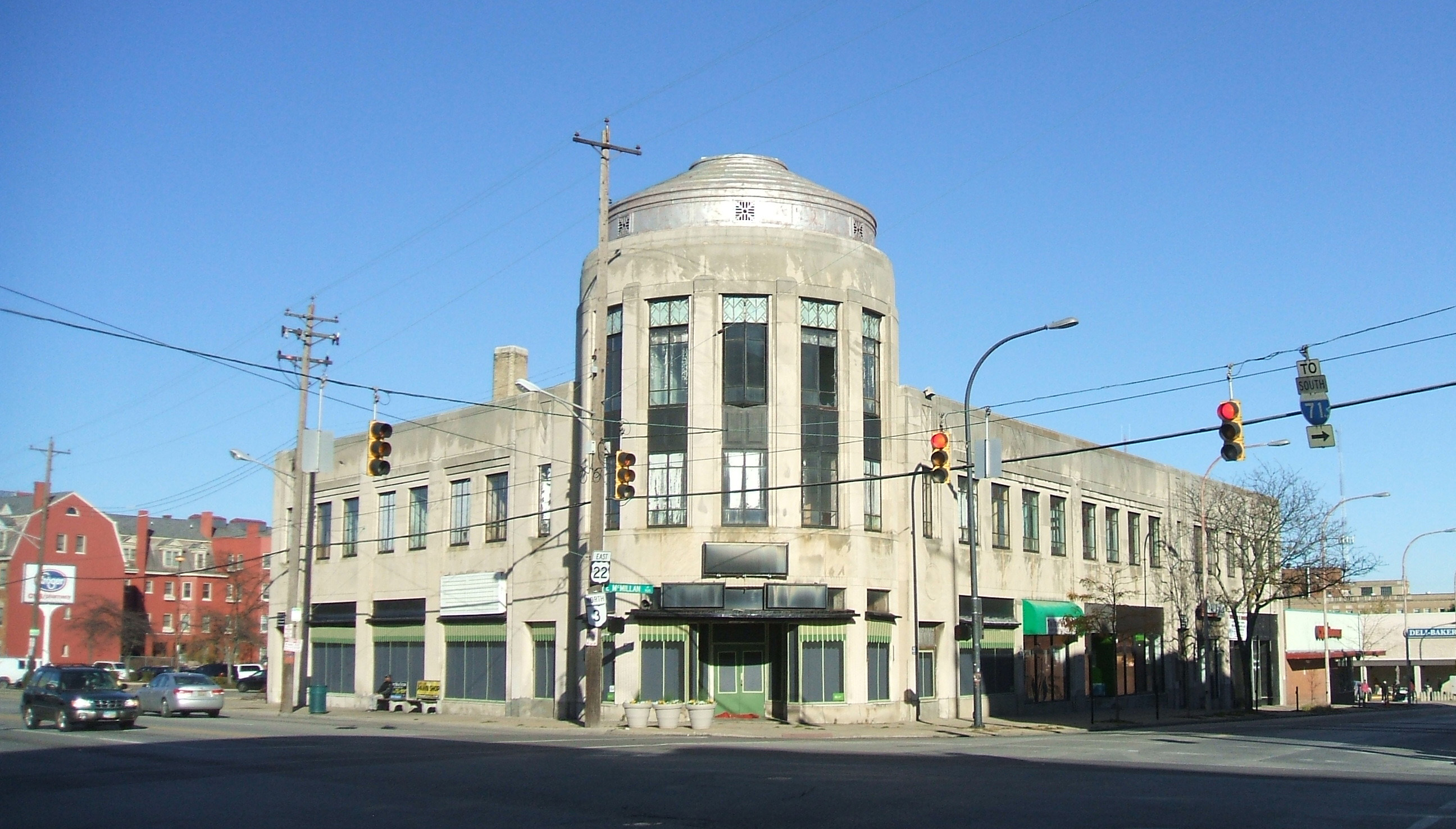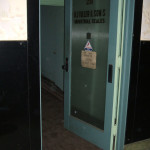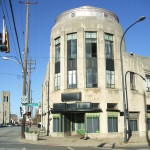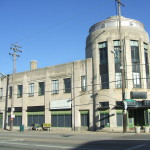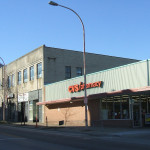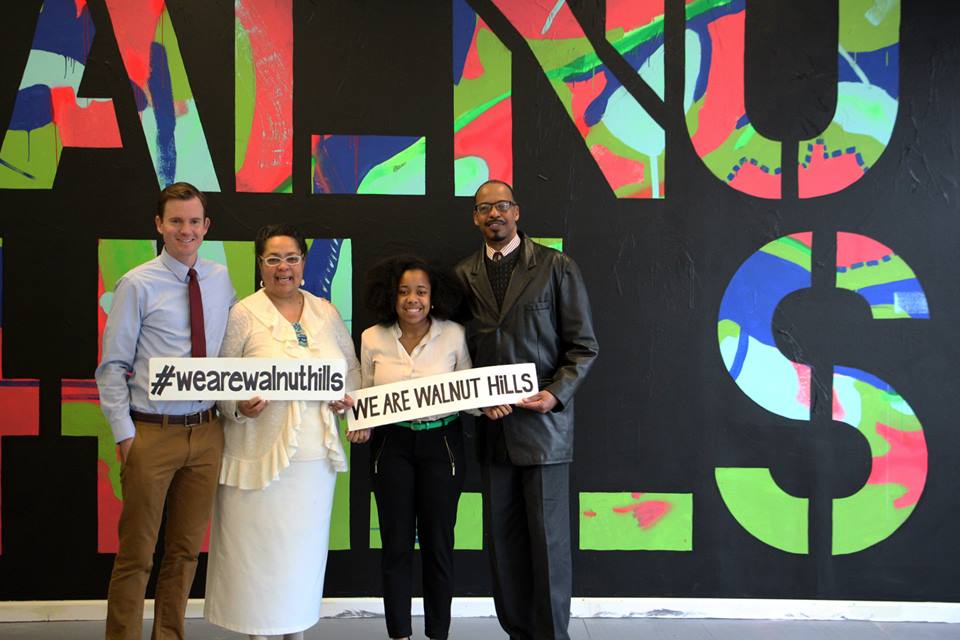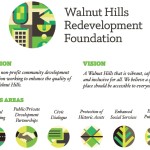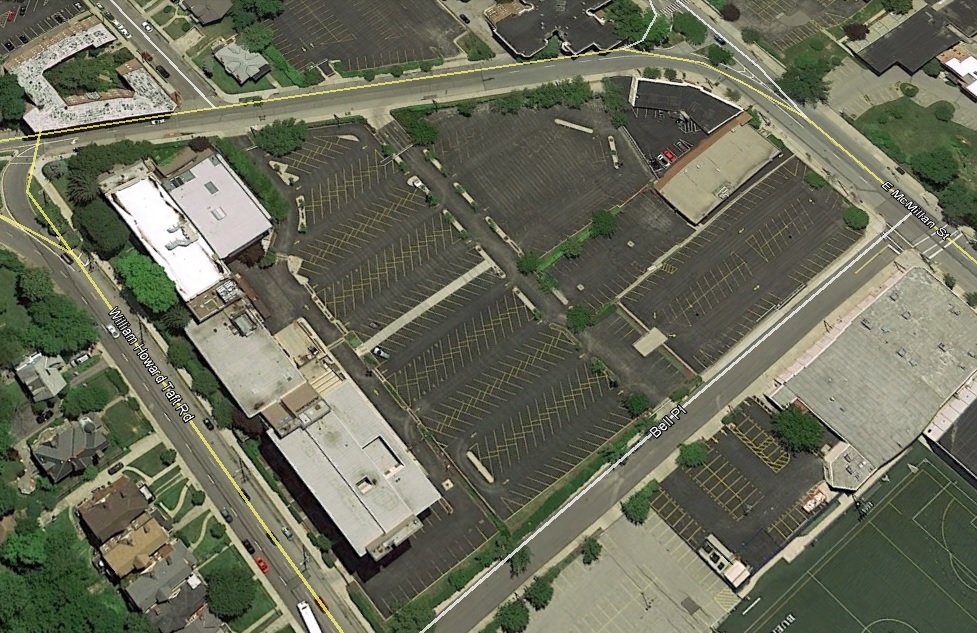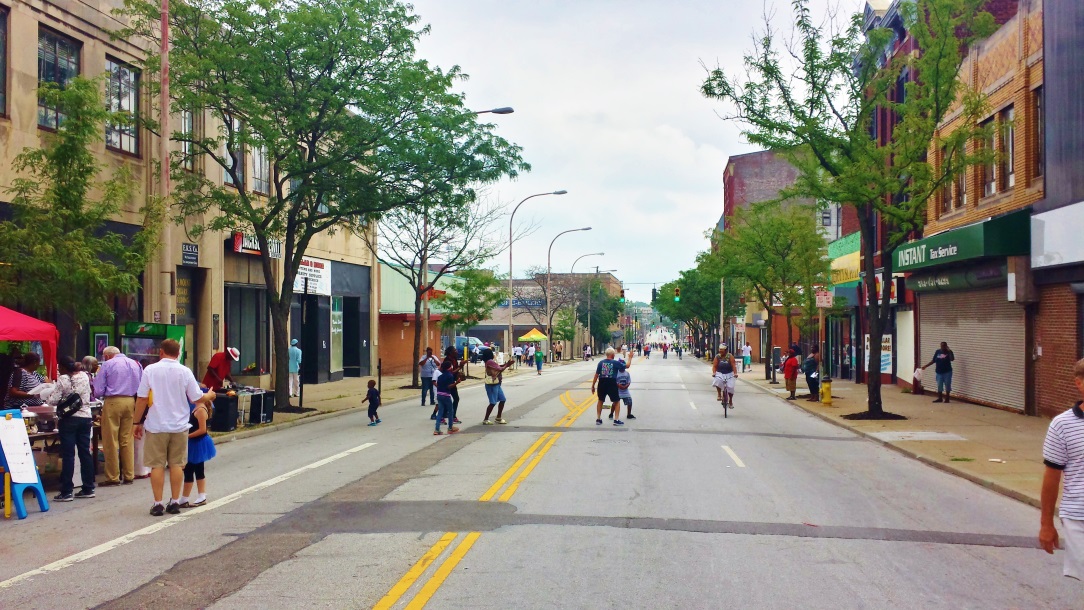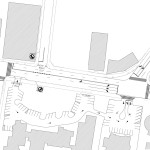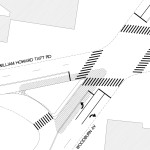Last week the Paramount Building at Peebles Corner in Walnut Hills was open to the public for the first time in decades, and UrbanCincy was invited to participate.
The Walnut Hills Redevelopment Foundation, which recently purchased the structure for $750,000 from the Morris Investment Group, allowed several dozen local residents and historic preservation enthusiasts to tour the second and third floor office spaces before the monthly meeting of the Cincinnati Preservation Collective’s monthly meeting.
The WHRF plans to renovate the office floors, as well as the street-level commercial spaces, so the building may return to use as an anchor for the business district.
However, the tour revealed that the foundation has a significant task ahead in order to make the plan a reality. While it appears that the interior of the building has been secure and not subject to vandalism, there is significant deterioration due to water leaks and open windows. Some rooms were even off limits to the tour due to concerns about structural integrity of floors and ceilings.
Not all was bad though. In fact, a number of attractive original elements remain in place. This includes wooden partitions and glass doors, some of which still retain the stenciled names of the former office occupants.
The Paramount Building, which was built in 1931, originally had a theater attached at the east end along E. McMillan Street, where the CVS Pharmacy now stands. The drug store is part of the property, and provides some cash flow to the WHRF as they undertake renovations.
At the CPC event, WHRF Executive Director Kevin Wright stated that an application was made on the day of the purchase for state historic preservation tax credits. Such tax credits would be instrumental in advancing the project and bringing the prominent structure back to life.
Originally, the building featured a tall spire atop the tower at the corner of Gilbert Avenue and McMillan Street. During World War II, the spire was removed so that the structural metal could be donated to the war effort. Wright announced that he hopes to have the spire rebuilt as part of the renovations.
